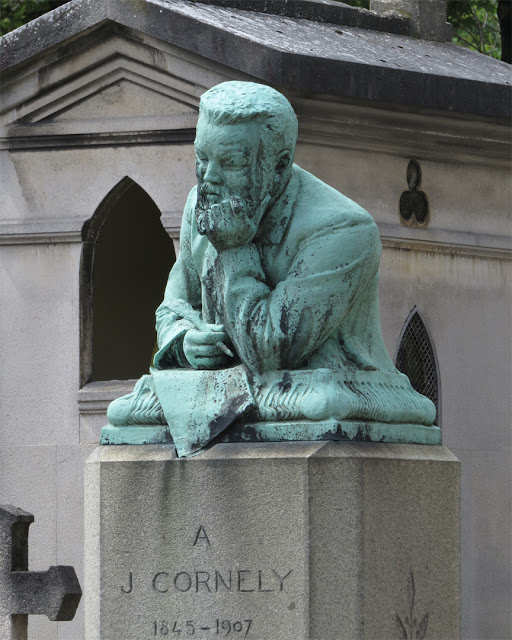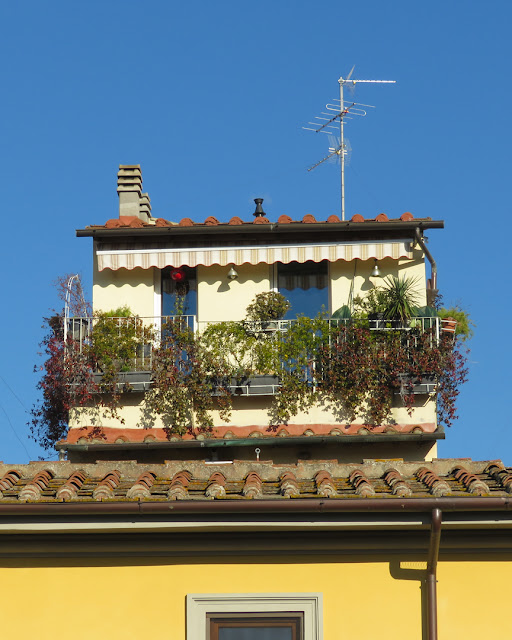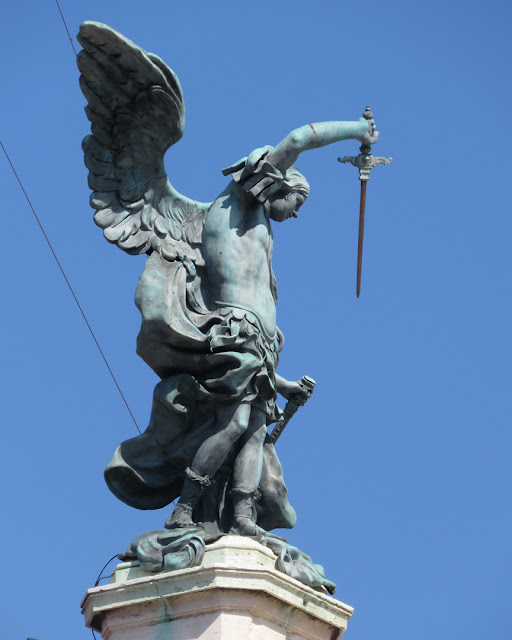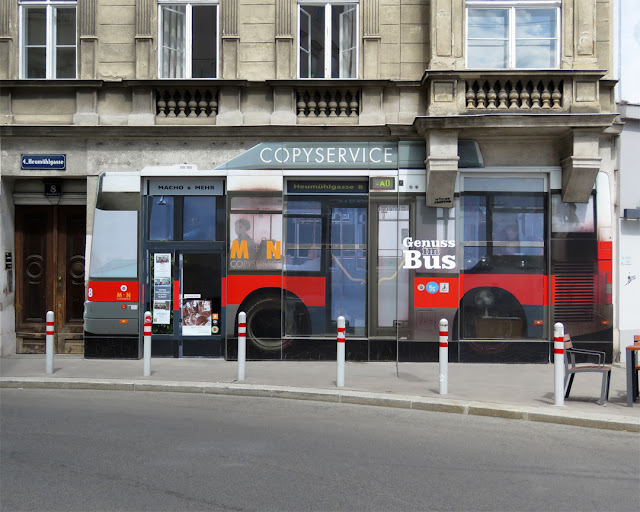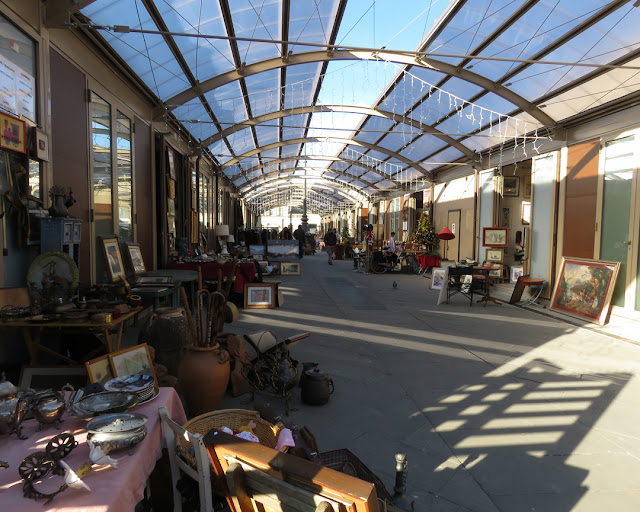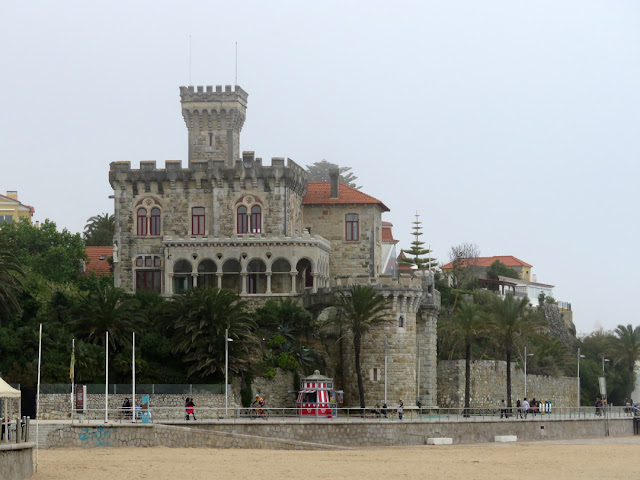Friday, July 31, 2020
Thursday, July 30, 2020
Jean Joseph Cornély
Grave of Jean Joseph Cornély (1845-1907) by Paul Moreau-Vauthier
Cimetière du Père-Lachaise, (Père Lachaise Cemetery)
Quartier du Père-Lachaise, 20th arrondissement
Paris, July 2014
Wednesday, July 29, 2020
The Tribune
The Tribune by Bernardo Buontalenti, 1583
Uffizi Gallery
Piazzale degli Uffizi
Florence, January 2020
“It was a cabinet of curios, containing a condensate of knowledge. The structure is octagonal because according to Christian tradition eight is the number which draws near Heaven. Besides, in ancient times octagonal plans were recurrent in the construction of important buildings as well as of baptisteries and basilicas. The dome, symbol of the Vault of Heaven, has an external lantern with a weathervane whose movements are internally reproduced on a painted wind rose. The lantern also works as a sundial: during both equinoxes and solstices the Sun passing through a hole displays the celestial mechanics also to ‘those who are inexperienced with planets and the motion of heavenly bodies’. Francesco I conceived the iconography of the Tribune’s decorations and furniture as a full cosmos featuring the four elements. Earth was represented by the floor realized by architect Buontalenti as a wide flower inlaid with polychrome marbles (alabaster from Northern Africa, green porphyry from Turkey, red porphyry from Egypt). Along the room’s perimeter at the base of the walls, Jacopo Ligozzi painted also plants and animals. On the dome Water was represented by 5780 mother of pearls coming from the Indian Ocean for the occasion and masterly set on a background painted with a scarlet varnish achieved - as it was usual in ancient times – by using millions of red cochineals. Under the varnish, 130 sq. meters of ceiling were then covered with layers of gold. Fire was represented by the precious red velvets on the walls provided with gold fringes. Air was symbolized by the towering lantern open to winds. The final effect is that of a treasure chest which catches the visitor by surprise almost astounding him.” (The Tribune, Uffizi)
Tuesday, July 28, 2020
Equestrian statue of George Washington
Equestrian statue of George Washington by Henry Kirke Brown, 1856
Union Square
New York, September 2007
“George Washington is an outdoor sculpture by Henry Kirke Brown (1814–1886), located in Union Square, Manhattan, in the United States. The bronze equestrian statue was dedicated in 1856 and is the oldest sculpture in the New York City Parks collection. Richard Upjohn served as architect for the pedestal / plinth. The sculpture measures 26'4" by 13'6" and sits on a Barre granite pedestal that measures 12'2" by 7'9" by 15'. It was dedicated on July 4, 1856. The monument is in axial alignment with the statue of Abraham Lincoln and the Independence Flagstaff.” (Equestrian statue of George Washington, Wikipedia)
Monday, July 27, 2020
Johannes Hevelius
Johannes Hevelius Monument by Jan Szczypka, 2006
ulica Korzenna
Gdańsk, September 2018
“Johannes Hevelius (Polish: Jan Heweliusz; 28 January 1611 – 28 January 1687) was a councillor and mayor of Danzig (Gdańsk), Kingdom of Poland. As an astronomer, he gained a reputation as ‘the founder of lunar topography’, and described ten new constellations, seven of which are still used by astronomers.” (Johannes Hevelius, Wikipedia)
Sunday, July 26, 2020
Castel Sant'Angelo
Castel Sant'Angelo
Lungotevere Castello
Rome, September 2019
“The Mausoleum of Hadrian, usually known as Castel Sant'Angelo (Castle of the Holy Angel), is a towering cylindrical building in Parco Adriano, Rome, Italy. It was initially commissioned by the Roman Emperor Hadrian as a mausoleum for himself and his family. The building was later used by the popes as a fortress and castle, and is now a museum. The structure was once the tallest building in Rome.” (Castel Sant'Angelo, Wikipedia)
Saturday, July 25, 2020
Friday, July 24, 2020
Nicolaus Copernicus
Nicolaus Copernicus by Bertel Thorvaldsen, 1830
Polish Academy of Sciences, Staszic Palace
Krakowskie Przedmieście
Warsaw, September 2018
Thursday, July 23, 2020
Wednesday, July 22, 2020
Astor Place Tower
Astor Place Tower by Charles Gwathmey, 2005
Astor Place, NoHo
New York, September 2007
“Astor Place Tower (also known as Sculpture for Living) is a 21-story residential building located on Astor Place in Manhattan. The building was developed by The Related Companies and designed by architect Charles Gwathmey. The building was panned by architectural critics as a symbol of gentrification, and sales of the building's condos were slow. The triangular site on which the tower was built was formerly a parking lot. Originally, a building developed by both Ian Schrager and Related, to be designed by either Rem Koolhaas or Frank Gehry, was planned for the location. Cooper Union, the owner of the parking lot, leased the land to the developers for 99 years. The original plan called for a hotel with approximately 100 rooms, and the terms of the lease from Cooper Union stipulated that the building be an "original artistic invention". The hotel was also to include a movie theater; completion of the building was expected in 2002. Ultimately, the hotel was not built, and instead, a luxury residential building designed by Gwathmey was constructed. There is a retail base which includes a Chase bank branch.” (Astor Place Tower, Wikipedia)
Tuesday, July 21, 2020
Dom Suskiego
Mosaic and Madonna
Dom Suskiego (Suski House)
Grodzka / plac Dominikański
Stare Miasto (Old Town)
Kraków, September 2018
Monday, July 20, 2020
Archangel Michael
Archangel Michael by Peter Anton von Verschaffelt, 1753
Castel Sant'Angelo
Rome, September 2019
“Leo X built a chapel with a Madonna by Raffaello da Montelupo. In 1536 Montelupo also created a marble statue of Saint Michael holding his sword after the 590 plague (as described above) to surmount the Castel. Later Paul III built a rich apartment, to ensure that in any future siege the pope had an appropriate place to stay. Montelupo's statue was replaced by a bronze statue of the same subject, executed by the Flemish sculptor Peter Anton von Verschaffelt, in 1753. Verschaffelt's is still in place and Montelupo's can be seen in an open court in the interior of the Castle.” (Castel Sant'Angelo, Wikipedia)
Sunday, July 19, 2020
Saturday, July 18, 2020
Friday, July 17, 2020
Mercato delle Pulci
Mercato delle Pulci (Flea Market)
Largo Annigoni
Florence, January 2020
“Late October saw the official opening of the new Mercato delle Pulci, or flea market, in largo Annigoni. Nearly four years have passed since the stalls were moved from piazza dei Ciompi, which they had occupied for more than six decades, but until last month their housing in the clearing near the Sant’Ambrogio market was no more than temporary tenting. The permanent new structure, which was inaugurated by mayor Dario Nardella, is instead made of steel and is intended to invoke the covered markets of 19th-century Italy. Designed by Florentine architect Alberto Breschi and costing around one million euro, it certainly makes the stalls look less nomadic, but has put pay to any hopes their tenants might have had of returning to their original home.” (Flea-ing the piazza, The Florentine)
Thursday, July 16, 2020
Peter Cooper
Peter Cooper by Augustus Saint-Gaudens, 1894
Cooper Union
Cooper Square
New York, September 2007
“For more than a century, this statue of Peter Cooper (1791–1883), a philanthropist, industrialist, and inventor, has watched over the park and school that bear his name. Cooper was a native New Yorker and workingman’s son who, with less than a year of formal schooling, became one of the most successful American businessmen of his day. He made his fortune in iron, glue, railroads, real estate, and communications. His inventions include the first trans-Atlantic telegraph cable and Tom Thumb, America’s first functioning steam engine. Cooper also invented Jell-o, with help from his wife, Sarah, who added fruit to his clarified gelatin. Despite his many successful ventures, Cooper failed in an 1876 presidential bid on the Greenback ticket; he secured just 81,737 popular votes. The real contest was between Republican Rutherford B. Hayes and Democrat Samuel Jones Tilden. Although Tilden won a majority of the popular vote, he was denied the presidency by a partisan Electoral Commission. Cooper dedicated his life and wealth to philanthropy. He wanted to ensure that immigrants and children of the working class would have access to the education which he never received. He believed that education should be “as free as water or air,” and in 1859 he established the Cooper Union for the Advancement of Science and Art, a coeducational college that continues to provide students with full-tuition scholarships in architecture, art, and engineering. Celebrated features of the institution included a free reading room and the Great Hall, the latter providing the setting for one of Abraham Lincoln’s most important speeches in which he established his anti-slavery platform. He delivered it on February 27, 1860 during his campaign for the Republican presidential nomination.” (Peter Cooper, NYC Parks)
Wednesday, July 15, 2020
Victor Schœlcher
Tomb of Victor Schœlcher (1804-1893)
Cimetière du Père-Lachaise (Père Lachaise Cemetery)
Quartier du Père-Lachaise, 20th arrondissement
Paris, July 2002
“Having never married or left issue, in his will Schœlcher distributed his money and donated his collection to Guadeloupe, which is now housed at the Schœlcher Musem (Musée Schœlcher) in Pointe-à-Pitre. First buried in the Père Lachaise Cemetery, his remains were transferred on 20 May 1949 to the Panthéon on the initiative of Senator Gaston Monnerville from Guiana. Schœlcher had wanted to be buried with his father Marc, who was therefore also interred in the Panthéon. The ashes of Félix Éboué, the first black person to be buried in the Panthéon, were transferred at the same time.” (Victor Schœlcher, Wikipedia)
Tuesday, July 14, 2020
Villa Lante al Gianicolo
Villa Lante al Gianicolo
Embassy of Finland to the Holy See
Passeggiata del Gianicolo
Rome, September 2019
“Villa Lante al Gianicolo is a villa in Rome on the Janiculum Hill (Gianicolo). It is a summer house designed by Giulio Romano in 1520-21 for Baldassare Turini, as one of Romano's first independent commissions after the death of his master Raphael. The site was believed to have been that of the house of the Roman poet Martial, and the new villa was built on the same footprint as the surviving ruins, with a spectacular view facing Rome. Today, the property is owned by the Republic of Finland through Senate Properties, and the building houses the Institutum Romanum Finlandiae and the Embassy of Finland to the Holy See.” (Villa Lante al Gianicolo, Wikipedia)
Monday, July 13, 2020
Sunday, July 12, 2020
Giant Flower
Riesenblumen (Giant Flowers) by Jacques Tilly
Skulpturengarten, Summerstage
Donaukanal
Vienna, June 2018
Saturday, July 11, 2020
Friday, July 10, 2020
Cooper Square Hotel
The Standard, East Village
Cooper Square
Lower Manhattan
New York, September 2007
“The Standard, East Village, formerly the Cooper Square Hotel, is a 21-story high-rise luxury hotel located at 25 Cooper Square in lower Manhattan, New York City. The tower was designed by Carlos Zapata Studio and structurally engineered by Leslie E. Robertson Associates. It has interiors by the Milanese designer Antonio Citterio. The hotel, which opened in December 2008, has 145 rooms and is the location of the Narcissa restaurant owned by André Balazs and Chef John Fraser. The Cooper Square Hotel became a Standard Hotel in 2011, and as of 2013 is undergoing renovations.” (The Standard, East Village, Wikipedia)
Thursday, July 9, 2020
Św. Włodzimierz Wielki
Św. Włodzimierz Wielki (St. Vladimir the Great) by Gennady Jerszow, 2015
zaułek Św. Bartłomiej
Gdańsk, September 2018
Wednesday, July 8, 2020
The Martyrdom of Saint Cecilia
The Martyrdom of Saint Cecilia by Stefano Maderno, 1600
Santa Cecilia in Trastevere
Piazza di Santa Cecilia
Rome, September 2019
“He is best known for the seemingly unposed, naturalistic recumbent marble of Santa Cecilia in the Church of Santa Cecilia in Trastevere (1599–1600), which immediately established his reputation. Elected to the Accademia di San Luca in 1607, Maderno became the pre-eminent sculptor of his generation, on the cusp between Mannerism and Baroque, rivalled in his prime only by Camillo Mariani, though he was eclipsed in his later years by the rapidly rising star of Bernini. His patron, Count Gaspare Rivaldi, having sought to reward him by procuring for him a sinecure at the excise offices of the Gabelle di Ripetta, the sculptor dutifully devoted his time to his new duties and neglected his art. The ‘Santa Cecilia’ was a counter-statement to the current dry and hectic complications of Mannerism, to which it confronted a simple sweeping outline and a stark pose. This is not a sanitized hagiographical representation of a saint, but the graphic representation of an uncorrupted corpse, claimed to be positioned just as it had been found. The saint's tomb had been opened in 1599, and Cardinal Paolo Emilio Sfondrato commissioned Maderno, very young at the time, to recreate the martyr's body in marble. Compare this statue with the passionately theatrical representations of Saint Theresa and Ludovica Albertoni by Bernini, and the Santa Rosa de Lima by Melchiorre Caffà.” (Stefano Maderno, Wikipedia)
Tuesday, July 7, 2020
Monday, July 6, 2020
Pomnik Partyzanta
Pomnik Partyzanta (Monument to the Partisan) by Wacław Kowalik, 1962
skwer Stanisława Wisłockiego
Warsaw, September 2018
Sunday, July 5, 2020
Pescaia di Santa Rosa
Pescaia di Santa Rosa (Santa Rosa Weir)
Lungarno Vespucci
Florence, January 2020
“The weir is an artificial barrage on the river that made it possible to properly channel and convey water in order to exploit it to produce energy for hydraulic factories. The Santa Rosa weir was located in the area of Cascine Park (the other large weir of Florence was the one of San Niccolò, situated in the area of the homonymous gate). It took the water to a fulling mill outside the city. Its structure is still visible today. The Arno’s complex characteristics have often been the object of studies aimed at solving, or at least checking, the problems periodically posed by its waters. In 1631, Galileo Galilei presented a report in the form of a letter to Grand Duke Ferdinando II, concerning the proposal of Sigismondo Coccapani to transform the Arno into a canal, making it navigable from its mouth until Florence, and freeing the countryside from the frequent floods. The idea was not new, as it had already been advanced in 1458 during the Republic of Florence. Moreover, in the times of Ferdinando I, Antonio da Sangallo had designed a possible canalization of the River Arno from Livorno to the swampland known as ‘Chiane’ to the Tiber.” (Santa Rosa Weir, Scientific Itineraries in Tuscany)
Saturday, July 4, 2020
Butler Library
Butler Library
Morningside Heights campus
Columbia University
New York, September 2007
“Butler Library is located on the Morningside Heights campus of Columbia University at 535 West 114th Street, in Manhattan, New York City. It is the university's largest single library with over 2 million volumes, as well as one of the largest buildings on the campus. It houses the Columbia University Libraries collections in the humanities, history, social sciences, literature, philosophy, and religion, as well as the Columbia Rare Book and Manuscript Library. The Neoclassical style building was built in 1931–1934 to a design by James Gamble Rogers. Butler Library remains at least partially open 24 hours a day during the academic year.” (Butler Library, Wikipedia)
Friday, July 3, 2020
Thursday, July 2, 2020
Santa Cecilia in Trastevere
Santa Cecilia in Trastevere
Piazza di Santa Cecilia
Rome, September 2019
“Santa Cecilia in Trastevere is a 5th-century church in Rome, Italy, in the Trastevere rione, devoted to the Roman martyr Saint Cecilia. The first church on this site was founded probably in the 3rd century, by Pope Urban I; it was devoted to the young Roman woman Cecilia, martyred it is said under Marcus Aurelius Severus Alexander (A.D. 222-235). Tradition holds that the church was built over the house of the saint. The baptistery associated with this church, together with the remains of a Roman house of the early Empire, was found during some excavations under the Chapel of the Relics. By the late fifth century, at the Synod of 499 of Pope Symmachus, the church is mentioned as the Titulus Ceciliae. On 22 November 545, Pope Vigilius was celebrating the Feast of the saint in the church, when the emissary of Empress Theodora, Anthemius Scribo, captured him. Pope Paschal I rebuilt the church in 822, and moved here the relics of St Cecilia from the Catacombs of St Calixtus. More restorations followed in the 18th century.” (Santa Cecilia in Trastevere, Wikipedia)
Wednesday, July 1, 2020
Forte da Cruz
Forte da Cruz
Rua de Olivença
Estoril, April 2019
“The construction of this Fortress situated on the beach of Tamariz in Estoril, dates back to the 17th century. The Fort was part of the coastal line defense fortifications starting at the beach of Abano and stretching to the beach of Caxias, which were built to defend from the invasion of an enemy who wanted to invade the Capital. Its original name was ‘Forte da Cruz de Santo António d'Assubida’ and had the purpose of crossing fire with another fort, that no longer exists, called ‘Forte de Santo António.’ This strategy made it possible for the beach to be secure and protected from eventual enemy landings. It was purchased from the state in the XIX century, more specifically in 1894 by the great grandfather of the current owners, who at the time kept the tradition of following the King and his court every year during his summer holidays to Estoril and Cascais.” (Forte da Cruz, Visit Cascais)
Subscribe to:
Posts (Atom)


